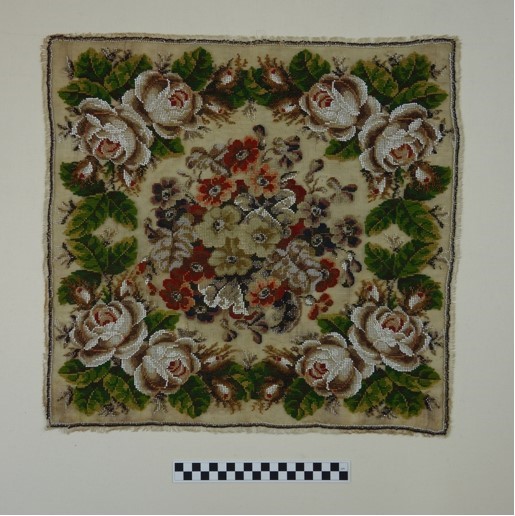Berlin work is a style of embroidery that is normally associated with the use of woollen yarn (tapestry yarn) on canvas. It was made in the West (notably Northern Europe and North America). from the mid-nineteenth century. It was usually worked in a single stitch, notably cross stitch or tent stitch, but it was not restricted to wool work. The same pattern charts were used to create knitted, as well as beaded designs.
The advent of this style of embroidery and the charts that were made to help with the embroidery, also saw developments in a wide range of canvases, materials such as aida, and related techniques such as tramming. The influence of Berlin wool work and indeed many designs can still be found at the beginning of the twenty-first century in commercial canvas embroidery kits.
 Berlin work panel using applied glass bead and hand embroidery with woollen threads (1860’s; TRC 2008.0433). For more information, c;lick on the illustration.
Berlin work panel using applied glass bead and hand embroidery with woollen threads (1860’s; TRC 2008.0433). For more information, c;lick on the illustration.

